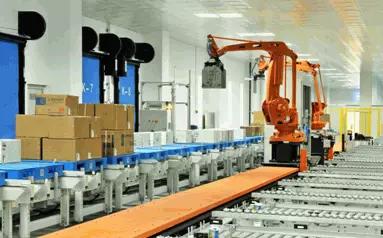Email:sales@seener-tech.com
WEB:www.seener-tech.com
What is industry 4.0?
1. Smart factory
Focus on intelligent production system and process, and the realization of networked distributed production facilities.
2、Intelligent production
It mainly involves the whole enterprise's production logistics management, man-machine interaction and the application of 3D technology in the industrial production process.
What opportunities will come in the era of industry 4.0?
|
Industrial Internet
|
|
"Made in China 2025" will kick off the industrial Internet From a global perspective, industrial Internet has received attention from many countries -- the international representatives of industrial Internet are the advanced manufacturing strategy of the United States and industry 4.0 of Germany. Through Internet, big data, cloud computing, broadband network and other technologies, through access to sensors, information perception, network communication, remote control and collaboration of physical devices can be realized. Earlier, it was reported that GE, an American company, proposed the concept of industrial Internet and invested 1 billion dollars to improve efficiency. In terms of domestic situation, the report of the 18th National Congress of the Communist Party of China proposes the direction of coordination among the four modernizations and deep integration between the two. "Made in China 2025" is expected to kick off the industrial Internet. According to some analysis, the development of China's industrial Internet will bring about an increase of about us $3 trillion in GDP in the next 20 years. After the application of industrial Internet, the efficiency of enterprises will be improved by about 20%, the cost can be reduced by 20%, and the energy saving and emission reduction can be reduced by about 10%. Compared with traditional industries, industrial Internet has two major meanings: first, it greatly improves the production efficiency of industrial manufacturing industry; Second, promote the innovation of business model, such as manufacturing service, reverse design, supply chain management. The industrial Internet is expected to transform manufacturing in the same way as "electricity in the early 20th century" and become a major opportunity for China to upgrade its manufacturing industry. |
|
Industrial automation
|
|
2015 is the first year of industrial automation
In the next five years, with the disappearance of the demographic dividend and the rising cost of raw materials and energy, China's manufacturing industry will undergo a historic transformation from an extensive and low-value-added model to an intensive and high-value-added model. As the "cornerstone" of high-end manufacturing, industrial automation equipment is faced with the double opportunities of upgrading traditional industries and developing demands of emerging industries. There will be two remarkable high-speed growth lines in the industry. Is a high-end equipment to accelerate growth, early permeability has higher numerical control machine tool, process automation systems, inverter and other products in the slowdown in the growth, and with the low labor costs to accelerate the uplink, industrial upgrading into the white-hot stage, and 'alternative artificial early low permeability properties and high-end equipment, such as industrial robots, automated assembly line, automated storage equipment, etc., is expected to be over the product period, enters the high speed growth, maintain an average 20-30% in the next five years of rapid growth. The second high-speed growth line is expected to rise of local automation leader. |
|
Industrial robot 
|
|
Robot industry will enter golden growth period In the upcoming "made in China 2025" plan, robots ranked second among the top 10 key promotion areas. In terms of the national situation, industrial robot parks have developed to more than 40, and the number of robot enterprises has exceeded 500. With the implementation of "made in China 2025", China's robot industry will usher in a golden period of rapid growth. Compared with foreign countries, it is clear that China's per capita robot ownership is still far behind the world average. In China, there are about 30 robots for every 10,000 factory workers. Germany's "robot density" is 10 times that of China, while Japan's is 11 times that of China. This brings rigid demand to the application of industrial robot. It is worth noting that many traditional industries in China are the market that robots will vigorously expand in the future, such as household appliances, rail transit, shipping and other fields. And for now, robots have entered the field of home appliances. Midea started large-scale production automation in 2012. By the end of 2014, it had 800 six-axis robots, and the group is expected to add 600 robots in 2015. Moreover, midea invested 800 million yuan to 1 billion yuan in the automation transformation in 2015. Galanz, zhigao have also introduced automated production lines. |


